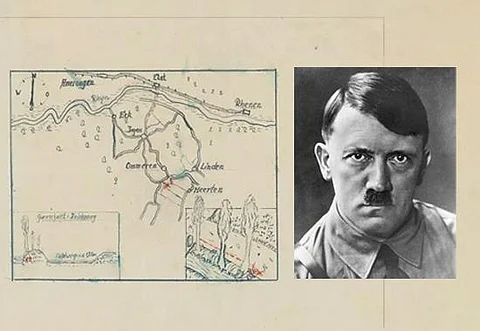

The National Archives of the Netherlands has sparked a massive treasure hunt ever since it released an old map which believed to have marked the spot where the German soldiers (Nazis) hid treasure worth millions of Euros during the World War 2 era. The Nazi Treasure Map has sparked the imagination of amateur treasure hunters in the Netherlands and there more hundreds of treasure hunters heading to a Dutch village to find the fortune. Interestingly, UK media reported that The National Archives of the Netherlands, in the hope to find the buried treasure, released a series of documents and a map to the treasure where X marks the spot.
What is inside Nazi Hidden Treasure?
As per reports, the treasure, which consisted of four ammunition cases stuffed with coins, watches, jewelry, diamonds, and other gemstones, is estimated to be worth at least 2 million or 3 million Dutch guilders in 1945, or around £15.85 million in today’s money. The Observer quoted Annet Waalkens, an adviser at the National Archives, which released over 1,300 historical documents last week who said, "A lot of researchers, journalists, and amateur archaeologists are really interested and excited. It remains to be seen whether any would-be treasure hunter will be able to locate the cases. Among the cache of Second World War papers was a 7cm-thick file that detailed the Dutch state’s futile efforts to recover the looted Nazi treasure after the war.
Nazi Hidden Tresure History
As per reports, the Nazi treasure was buried in April 1945, just as the Allies were about to liberate Arnhem in the east of the Netherlands. German troops were fleeing. “They decide to bury the treasure because it’s just getting a little too hot under their feet and they’re scared," Waalkens said. The valuable cargo was buried 70-80cm deep in the roots of a poplar tree just outside the village of Ommeren, about 25 miles from Arnhem. The loot might have vanished from history had it not been for a chatty German soldier, Helmut S, who was not one of the original looters but assisted in the burial.
The map was obtained from a German soldier shortly after the war by the Dutch institute that was tasked with tracing the German capital in the Netherlands after the country was freed from Nazi occupation in 1945. The map’s creator is unknown, but archivists believe it was created by one of the German soldiers. The map was placed in the Beheersinstituut’s file after Helmut S handed it over, with the proviso that it would not be released for many years to protect the financial interests of the property owners. Several theories were floated by Dutch officials. Perhaps the treasure was discovered by a local witnessing the burial or by the mysterious surviving German soldier. Others were suspicious of the Americans. Beheersinstituut staff encountered two American officers during the third dig and noticed that the soil in the area had been disturbed.